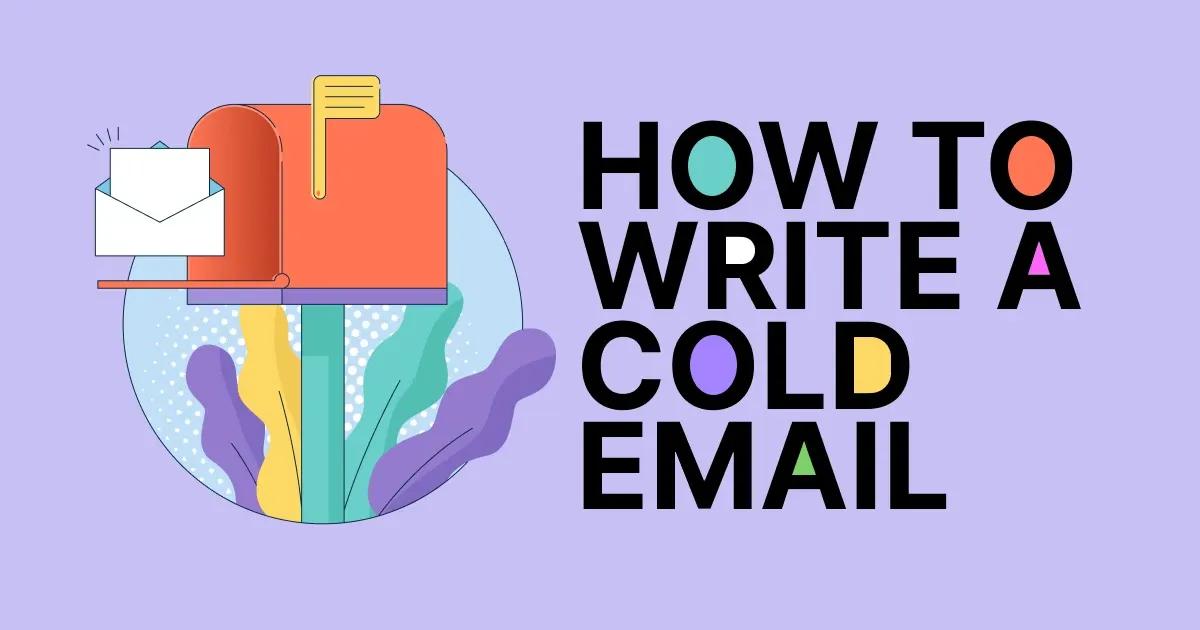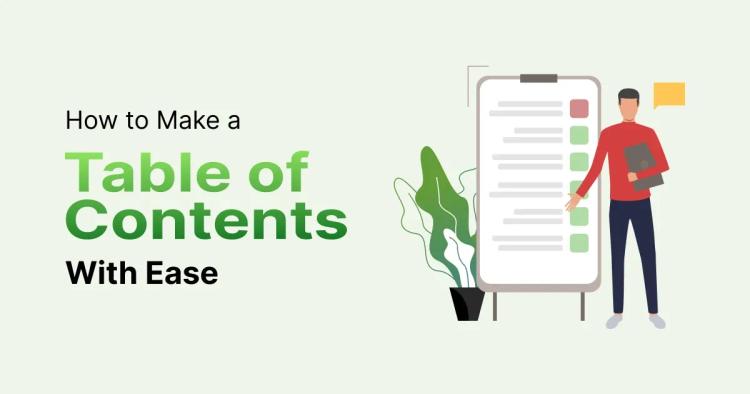In today's fast-paced world, reaching out to potential clients, partners, or investors can be a daunting task. Cold emailing offers a way to initiate these connections, even if you don't have a prior relationship. But let's be real - nobody likes getting spammy, irrelevant emails cluttering up their inbox.
That's why it's crucial to understand how to write a cold email that not only gets opened but also sparks genuine interest and conversation. Imagine you're at a networking event. You wouldn't just walk up to someone you've never met and start pitching your product or service, right? That would be awkward and off-putting.
Instead, you'd probably start by introducing yourself, asking about their interests, and finding common ground. Cold emailing is a lot like that - it's about making a connection, starting a conversation, and building relationships.
Understanding the Purpose of Cold Emails
So why bother with cold emails in the first place? Well, think about it this way: every successful business relationship starts with a conversation. Whether you're trying to land a new client, secure a partnership, or attract investment, you need to get the conversation started somehow. And that's where cold emailing comes in.
Cold emails give you the opportunity to reach out to people you wouldn't otherwise have access to. They allow you to introduce yourself, your company, and what you have to offer in a non-intrusive way. And if done right, they can open the door to exciting opportunities and new connections.
But here's the thing: cold emailing isn't just about pitching your product or service and hoping for the best. It's about laying the groundwork for a meaningful conversation. It's about showing your recipient that you've taken the time to understand their needs and how you can help meet them.
And most importantly, it's about building trust and credibility so that when the time comes to do business, you're top of mind.
Researching Your Target Audience and Prospects
When it comes to writing successful cold emails, one of the most crucial steps is understanding who you're reaching out to. This means doing some homework to learn about your target audience and prospects. Here's how you can do it:
-
Identify Your Ideal Customer: Start by defining who your ideal customer is. What industries do they work in? What job titles do they hold? What are their pain points and challenges?
-
Use Online Tools: There are plenty of online tools available to help you research your target audience and prospects. LinkedIn is a great place to start. Look for companies and individuals who fit your ideal customer profile and see what information you can gather about them.
-
Read Industry Publications: Industry publications and blogs can provide valuable insights into your target audience's interests, concerns, and trends. Take the time to read up on the latest news and developments in your industry to better understand the challenges and opportunities facing your prospects.
-
Study Competitors: Take a look at what your competitors are doing. Who are they targeting? What messaging are they using? While you don't want to copy their approach outright, studying your competitors can give you valuable insights into what's working in your industry.
-
Talk to Your Existing Customers: Your existing customers can be a goldmine of information. Reach out to them and ask about their experiences, pain points, and challenges. Use this feedback to refine your messaging and better target your cold emails.
By taking the time to research your target audience and prospects, you can ensure that your cold emails are relevant, targeted, and effective.
Crafting an Attention-Grabbing Subject Line
Once you've done your research and understand who you're targeting, the next step is to craft an attention-grabbing subject line that entices the recipient to open your email. Here are some tips for crafting a subject line that gets noticed:
-
Keep it Short and Sweet: Your subject line should be concise and to the point. Aim for no more than 6-8 words to ensure that it's easy to read and understand at a glance.
-
Be Specific and Relevant: Make sure your subject line is specific and relevant to the recipient. Reference something you learned during your research to show that you've done your homework and that your email is tailored to their needs.
-
Create Curiosity: Pique the recipient's curiosity by posing a question or making a bold statement. This can compel them to open their email to learn more.
-
Use Personalization: Whenever possible, personalize your subject line with the recipient's name or company name. Personalization can help your email stand out in a crowded inbox and make a stronger connection with the recipient.
-
Avoid Spammy Tactics: Stay away from spammy tactics like using all caps or excessive punctuation in your subject line. Not only can these tactics turn off your recipient, but they can also trigger spam filters and prevent your email from reaching its intended destination.
By following these tips, you can craft a subject line that grabs the recipient's attention and increases the likelihood that they'll open your email.
Personalizing Your Message for Maximum Impact
Personalization is like adding a pinch of salt to your dish—it brings out the flavor and makes it more enjoyable. When you personalize your cold email, you're showing the recipient that you've taken the time to understand who they are and what they need.
Here are some ways to personalize your message for maximum impact:
-
Address the recipient by name: It's a small gesture but addressing the recipient by their name can make a big difference. It shows that you're not just sending out a mass email, but that you've taken the time to address them personally.
-
Reference specific details: Do your homework before reaching out. Mention something specific about the recipient's company, recent achievements, or industry trends. This shows that you've done your research and that your email is tailored to their needs.
-
Share relevant experiences: If you have a shared connection or a mutual interest, don't be afraid to mention it. Finding common ground can help you establish a rapport with the recipient and make your email more relatable.
-
Offer personalized solutions: Instead of sending a generic pitch, tailor your message to address the recipient's specific pain points or challenges. Show them that you understand their needs and that you have a solution that can help.
Remember, the key to effective personalization is to be genuine and sincere. Avoid using generic templates or mass-mailing tactics, as they can come across as insincere and spammy. Instead, take the time to craft a thoughtful and personalized message that resonates with the recipient on a personal level.
Structuring Your Email for Clarity and Engagement
Imagine your email is a road trip—you want to plot out your route carefully to ensure a smooth journey. Similarly, structuring your email is about organizing your thoughts in a way that's easy to follow and engaging for the reader.
Here's how to structure your email for clarity and engagement:
-
Start with a clear introduction: Begin your email with a brief introduction that clearly states who you are and why you're reaching out. Keep it concise and to the point and avoid unnecessary fluff.
-
Highlight the benefits upfront: In the body of your email, focus on highlighting the benefits of your product or service. What problem does it solve? How will it make the recipient's life easier or better? Be specific and concrete in your language.
-
Use bullet points and subheadings: Break up your email into smaller, digestible chunks using bullet points and subheadings. This makes it easier for the reader to scan your email and pick out the most important information.
-
Include social proof: If you have testimonials, case studies, or other forms of social proof, incorporate them into your email. This adds credibility to your claims and reassures the recipient that they're making the right decision by engaging with you.
-
End with a clear call to action: Close your email with a clear and compelling call to action that prompts the recipient to take the next step. Whether it's scheduling a meeting, requesting more information, or downloading a resource, make it easy for them to engage with you.
By structuring your email in this way, you can make it easier for the recipient to understand your message and engage with your content. Remember to keep it concise, relevant, and focused on adding value to the reader. With a well-structured email, you can increase your chances of getting a positive response and moving the conversation forward.
Utilizing Copychecker for Polished Communication
When it comes to sending out cold emails, one of the biggest concerns is making sure your message is error-free and professional. That's where tools like Copychecker's Grammar Checker come in handy. This tool helps you catch any grammar mistakes, spelling errors, or awkward phrasings that might make your email look unpolished.
Here's how you can use Copychecker's Grammar Checker to improve your cold emails:
-
Proofreading: Before sending your cold email, run it through Copychecker's Grammar Checker to catch any typos or grammatical errors. Even small mistakes can make you look careless or unprofessional, so it's essential to catch them before hitting send.
-
Improving Clarity: Sometimes, you might write a sentence that's grammatically correct but still unclear or confusing. Copychecker's Grammar Checker can help you identify these instances and suggest ways to rephrase your sentences for better clarity and comprehension.
-
Enhancing Tone: The tone of your cold email can make a big difference in how it's received. Copychecker's Grammar Checker can help you ensure that your tone is appropriate for your audience and that you're coming across as professional and respectful.
-
Customizing Suggestions: Copychecker's Grammar Checker allows you to customize its suggestions based on your writing style and preferences. You can choose to accept or reject each suggestion individually, giving you full control over the final version of your email.
-
Saving Time: Writing and proofreading emails can be time-consuming, especially if you're sending out a lot of them. Copychecker's Grammar Checker can help you save time by quickly identifying and correcting errors, allowing you to focus on crafting compelling content.
By using Copychecker's Grammar Checker to polish your cold emails, you can ensure that your messages are error-free, clear, and professional, increasing your chances of getting a positive response from your recipients.
Highlighting Benefits and Value Propositions
When writing a cold email, it's essential to focus on the benefits and value propositions of your product or service. This means highlighting how your offering can solve your recipient's problems or help them achieve their goals. Here's how you can effectively highlight the benefits and value propositions in your cold emails:
-
Identify Pain Points: Start by identifying the pain points or challenges that your recipient is facing. What problems are they trying to solve? What goals are they trying to achieve? By understanding their needs, you can tailor your message to address them directly.
-
Showcase Features: Once you've identified your recipient's pain points, highlight how your product or service can help. What features or capabilities does it offer that are relevant to their needs? Be specific and concrete and focus on how your offering can make their life easier or more productive.
-
Quantify Results: Whenever possible, quantify the results that your recipient can expect from using your product or service. This could be in terms of time saved, money saved, or increased efficiency. By quantifying the benefits, you make them more tangible and compelling to your recipient.
-
Provide Social Proof: Social proof is a powerful tool for building trust and credibility. Include testimonials from satisfied customers, case studies of successful projects, or mentions of reputable clients or partners to show that your offering delivers real results.
-
Create a Sense of Urgency: Finally, create a sense of urgency in your cold email to encourage your recipient to take action. Limited time offers, exclusive deals, or special promotions can motivate them to act quickly and seize the benefits of your offering.
By highlighting the benefits and value propositions of your product or service in your cold emails, you can capture your recipient's attention and persuade them to take the next step towards working with you.
FAQs
What is a cold email?
A cold email is an unsolicited email sent to a recipient who has not previously expressed interest in or had any prior contact with the sender. It's typically used for reaching out to potential clients, partners, investors, or other contacts for business purposes.
When should you send a cold email?
Cold emails can be sent at any time, but it's essential to consider the recipient's schedule and preferences. Avoid sending cold emails late at night or early in the morning, as they may get lost in the recipient's inbox. Instead, aim to send your emails during regular business hours when the recipient is most likely to be checking their email.
What is the benefit of sending a cold email?
The main benefit of sending a cold email is the opportunity to initiate contact with potential clients, partners, or other contacts who may be interested in your product or service. Cold emails can help you expand your network, generate leads, and ultimately grow your business.
How to write a good cold email?
To write a good cold email, focus on personalization, relevance, and value. Tailor your message to the recipient's needs and interests, and clearly communicate the benefits of your offering.
How to write a follow-up cold email?
When writing a follow-up cold email, reference your previous message and remind the recipient of your initial contact. Be polite and respectful and offer additional value or information to encourage them to respond. Keep your follow-up email concise and focused on moving the conversation forward.
How to write a cold email for networking?
When writing a cold email for networking, focus on building a genuine connection with the recipient. Introduce yourself briefly and explain why you're reaching out. Be specific about what you're looking for, whether it's advice, mentorship, or a potential collaboration, and offer something of value in return.
How to write a cold sales email?
When writing a cold sales email, emphasize the benefits and value propositions of your product or service. Tailor your message to the recipient's needs and interests and provide evidence of your credibility and track record of success.
How to write a cold email for a job?
When writing a cold email for a job, focus on showcasing your skills, experience, and enthusiasm for the role or company. Tailor your message to the recipient's needs and interests and explain why you're a good fit for the position.
How to write a cold call email?
When writing a cold call email, be direct and to the point. Introduce yourself briefly and explain why you're reaching out. Clearly communicate the purpose of your email and what you're hoping to achieve.
How to write a cold email for research?
When writing a cold email for research purposes, be clear and specific about what you're looking for. Explain why you're reaching out to the recipient and how their expertise or insights could be valuable to your research.
Conclusion
Crafting a successful cold email is both an art and a science. It requires careful research, thoughtful personalization, and strategic execution. By following the five steps outlined in this guide and leveraging tools like Copychecker's Grammar Checker, you can increase your chances of writing cold emails that get noticed, opened, and acted upon.
So, don't be afraid to put yourself out there, experiment with different approaches, and keep refining your strategy until you find what works for you. With persistence, patience, and a little bit of creativity, you can master the art of cold emailing and unlock new opportunities for growth and success in your business.




